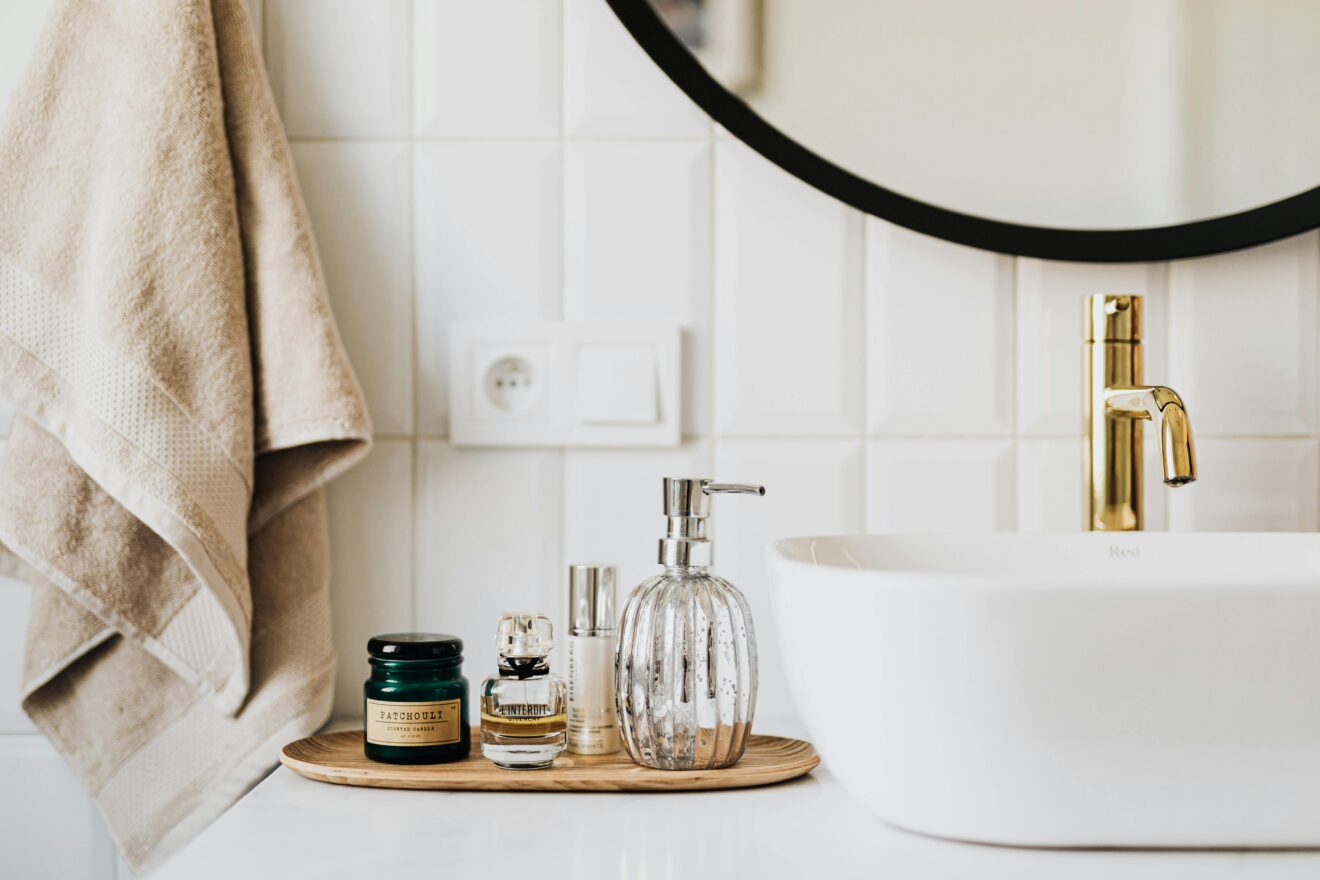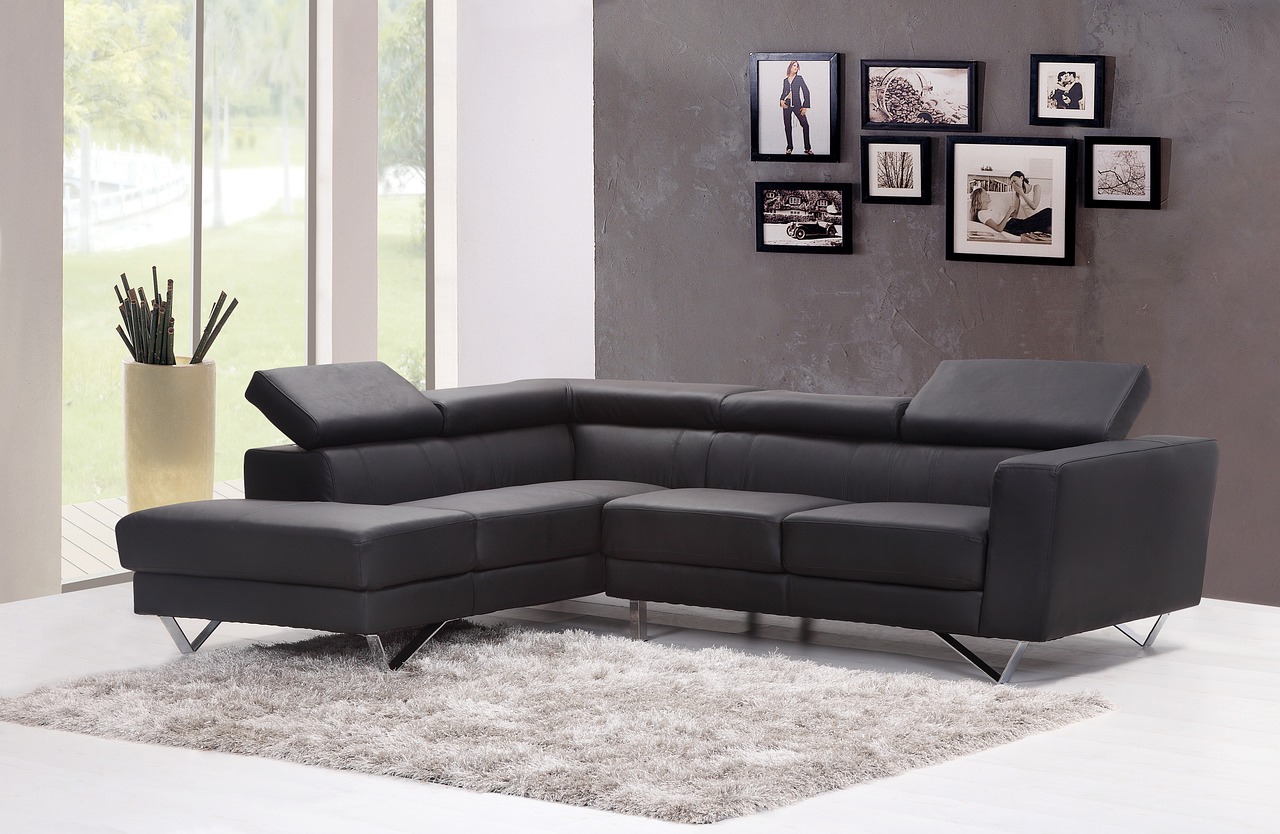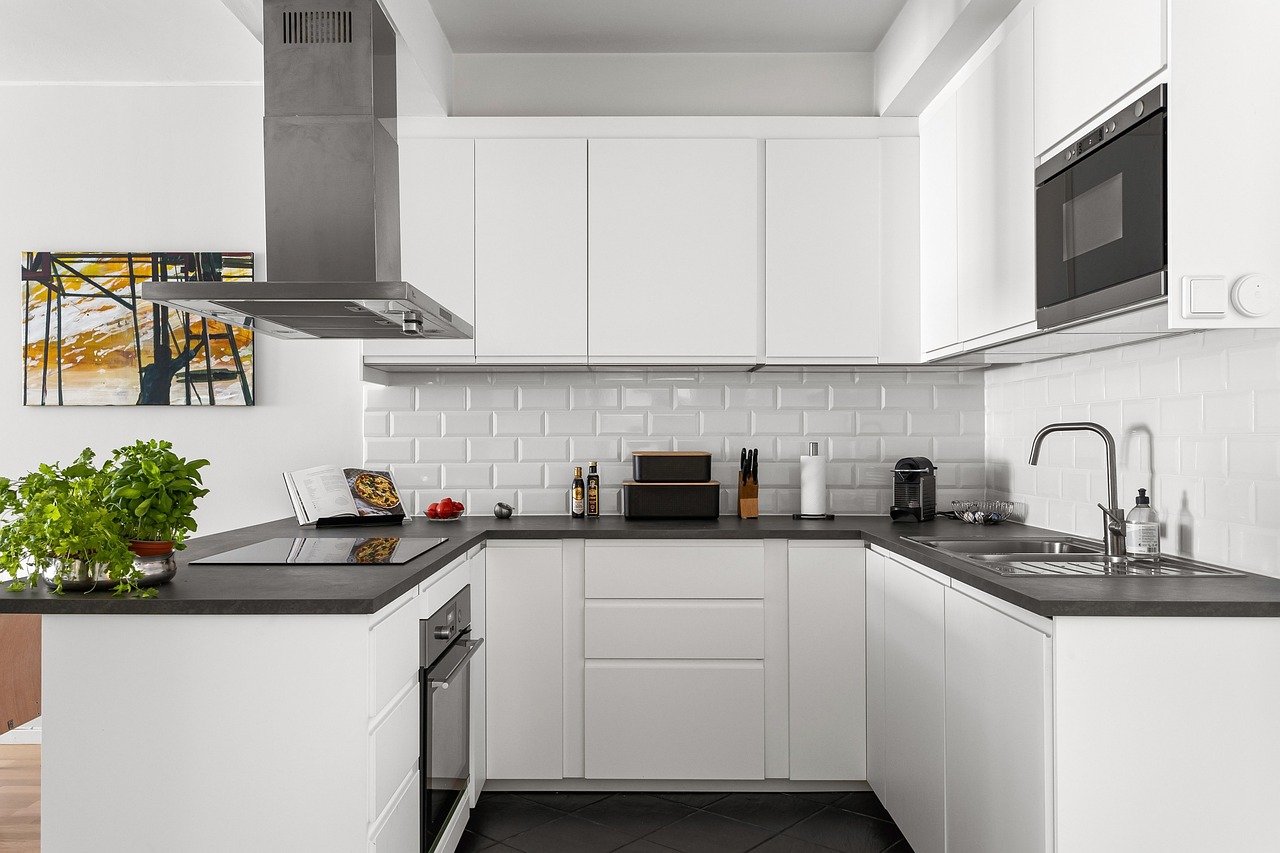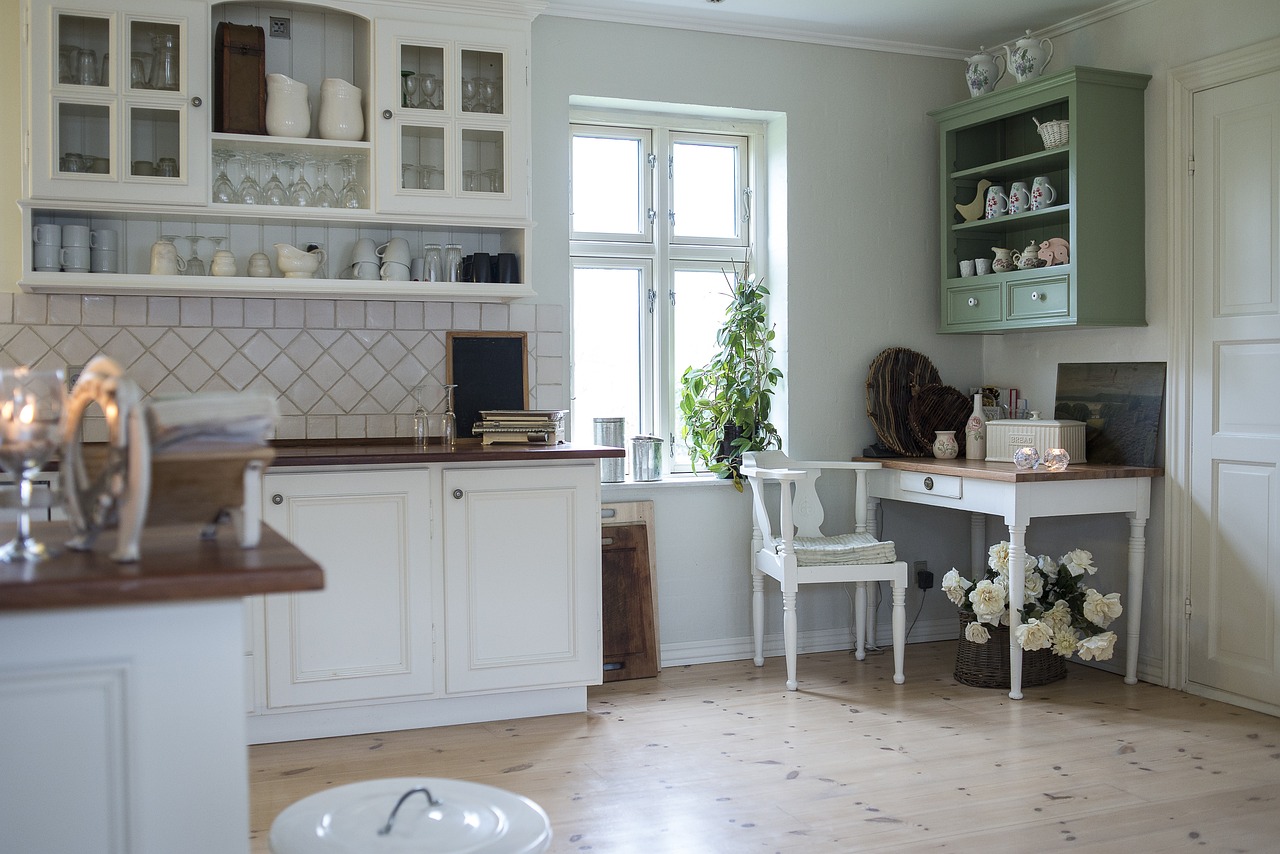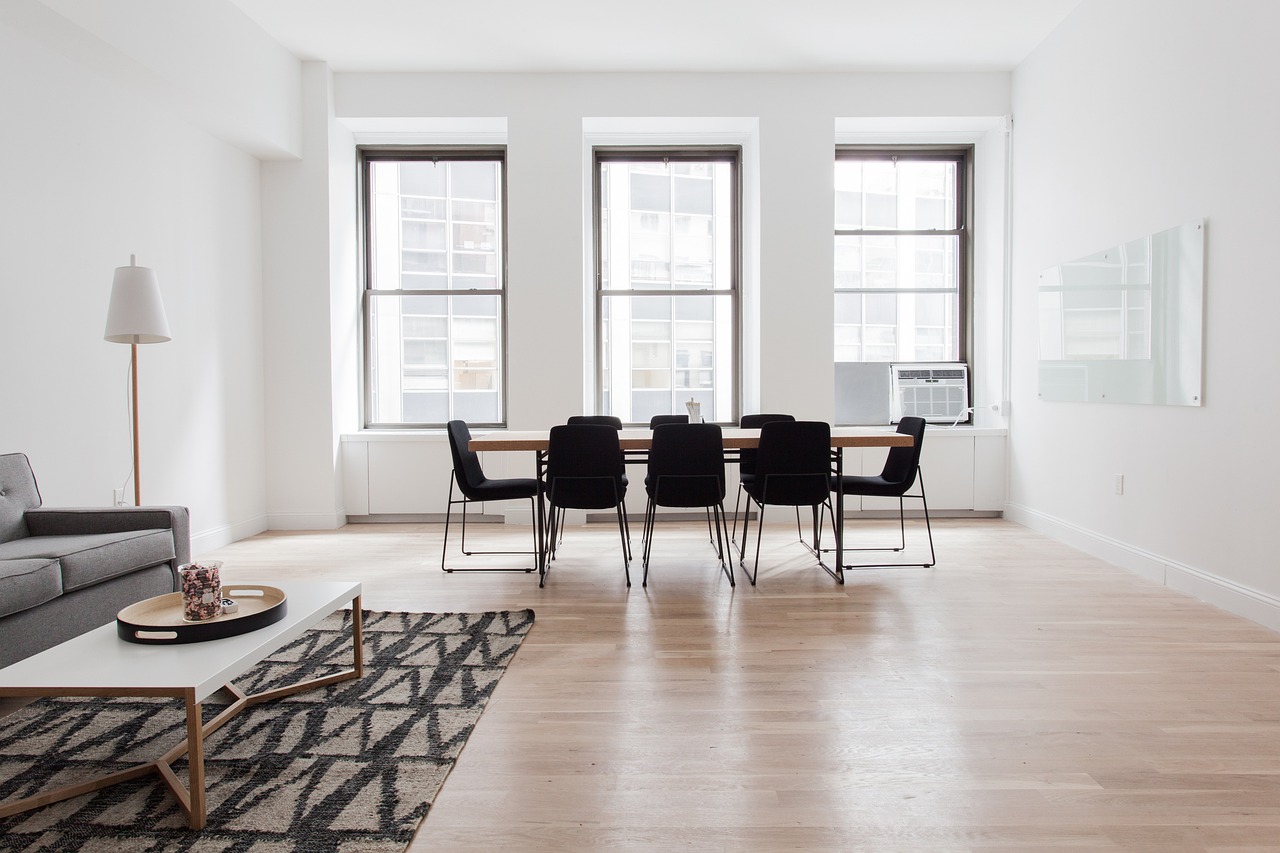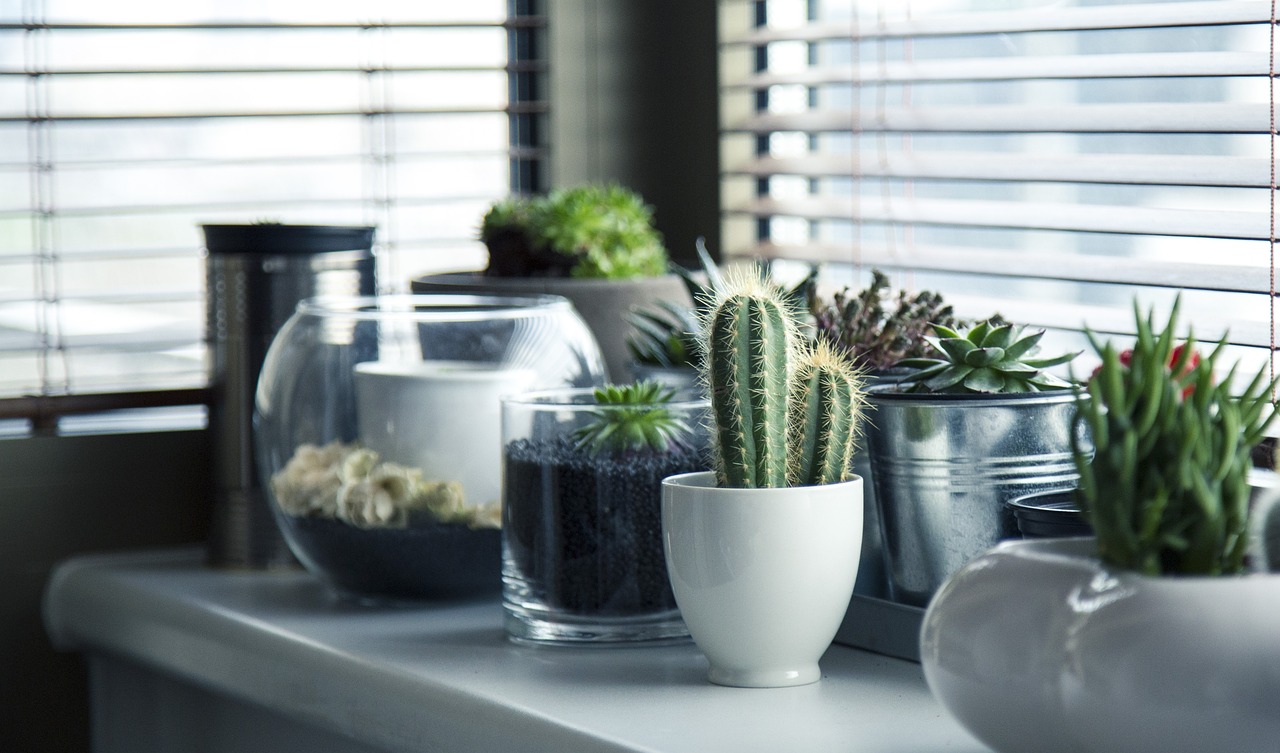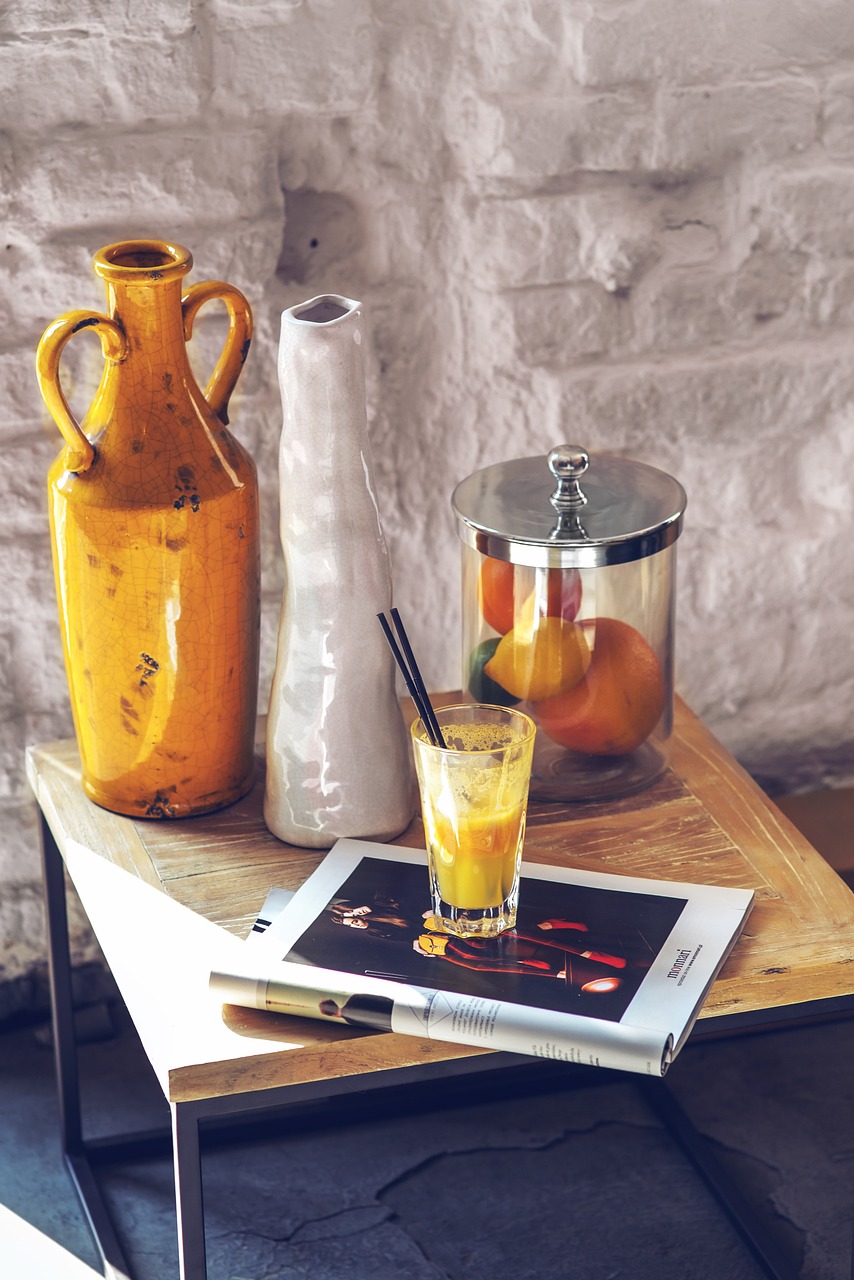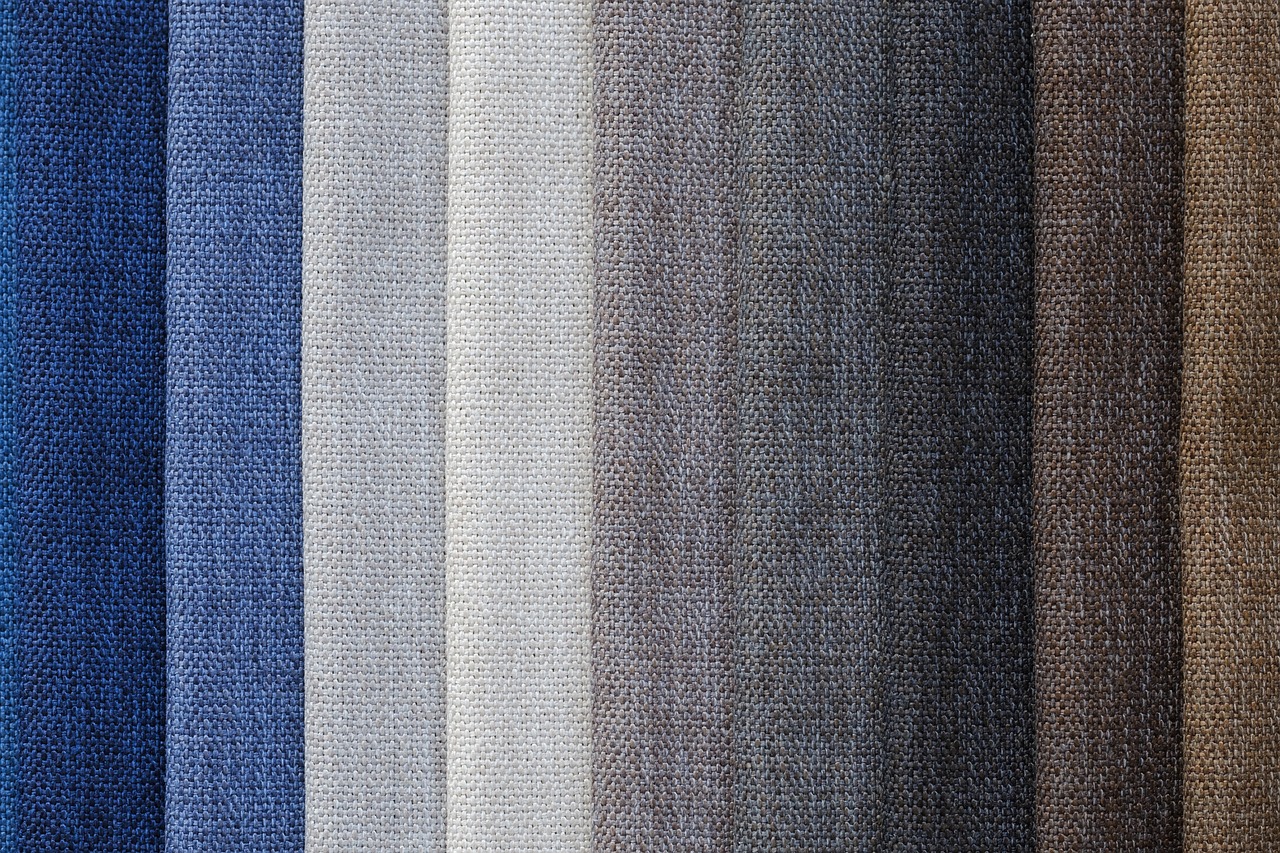The bathroom, often overlooked in the grand scheme of home decor, is a sanctuary where the day begins and ends. A well-decorated bathroom can elevate your mood, enhance relaxation, and add significant value to your home. Whether you’re working with a spacious master bath or a cozy powder room, thoughtful decor can make all the difference. Here’s a guide to help you transform your bathroom into a stylish and functional retreat.
1. **Choose a Theme or Style**
Before diving into specific decor items, decide on a theme or style for your bathroom. Here are a few popular options:
– **Modern**: Clean lines, minimalistic design, and neutral colors.
– **Vintage**: Antique fixtures, clawfoot tubs, and classic patterns.
– **Coastal**: Light colors, natural textures, and ocean-inspired accents.
– **Rustic**: Warm woods, natural materials, and a cozy, lived-in feel.
2. **Color Palette**
The color palette sets the tone for your bathroom. Light, neutral colors can make a small bathroom feel larger and more open. Soft blues, greens, and grays are calming and create a spa-like atmosphere. For a more dramatic look, consider bold hues like navy, charcoal, or emerald green, balanced with lighter accents.
3. **Statement Walls**
Creating a statement wall can add a focal point to your bathroom. Options include:
– **Paint**: A bold color on one wall can create a striking visual impact.
– **Wallpaper**: Modern, moisture-resistant wallpapers are perfect for adding pattern and personality.
– **Tile**: Intricate tile patterns or a mosaic can create a luxurious feel.
4. **Fixtures and Hardware**
Fixtures and hardware are the jewelry of your bathroom. Opt for high-quality materials like brass, chrome, or matte black. Matching faucets, showerheads, and cabinet handles can create a cohesive look. Don’t forget about lighting fixtures—chandeliers, sconces, and vanity lights can add both function and flair.
5. **Storage Solutions**
Efficient storage is key to a tidy and stylish bathroom. Consider:
– **Open Shelving**: Display attractive toiletries, plants, or decorative items.
– **Vanity with Storage**: Choose a vanity with drawers or cabinets to keep essentials hidden.
– **Baskets and Bins**: Woven baskets or decorative bins can store towels, toilet paper, and other necessities.
6. **Textiles and Accessories**
Textiles are a simple way to inject color and texture. Think plush towels, a soft bath mat, and a stylish shower curtain. Coordinate these with your overall color scheme for a cohesive look. Accessories like soap dispensers, toothbrush holders, and trays can tie the room together.
7. **Greenery and Art**
Plants can bring life and freshness to your bathroom. Choose low-maintenance varieties like succulents, snake plants, or pothos that thrive in humid environments. Artwork is another way to add personality—consider framed prints, photographs, or even a statement mirror.
8. **Personal Touches**
Finally, add personal touches to make the space truly yours. Display favorite candles, use a luxurious robe, or add a Bluetooth speaker for music. These small details make the bathroom a place where you can relax and unwind.
Decorating your bathroom is about blending style with function. With thoughtful choices in color, fixtures, storage, and accessories, you can create a space that is both beautiful and practical. Whether you prefer a modern, vintage, coastal, or rustic look, your bathroom can become a stylish retreat that sets the tone for your day. So go ahead, start planning, and let your creativity shine!
Art isn’t just something we hang on our walls; it’s a reflection of our personal taste and a powerful tool to tell the story of our homes. A gallery wall is a fantastic way to not only showcase your prized art pieces but also to infuse personality and style into your living space. Whether you’re a homeowner looking to add a fresh touch to your walls or an interior design aficionado whose living room is in dire need of a makeover, the following tips will guide you through the process of creating a gallery wall that’s a masterpiece in itself.
The Art Selection Process
Choosing the right mix of artworks for your gallery wall is a blend of art and science. Here’s how to do it:
Match Styles, Sizes, and Colors
The coherence of your gallery wall hinges on the interplay between various art elements. Start by identifying the predominant style and color theme in your living room. Do you lean towards vibrant, modern art or are you more into muted, traditional pieces? Are you working with a neutral palette, or are your walls already an exhibition of color? Pick pieces that complement or accentuate the room’s existing design.
Next, consider the sizes of your art. A good gallery wall has a mix of small, medium, and large pieces to keep it visually engaging. A trick is to have the largest or most eye-catching piece as the focal point – the “anchor” of the gallery – and arrange the other items around it to create movement and flow.
Mix and Match Mediums
Don’t be afraid to mix mediums like paintings, prints, photographs, and textiles. The contrasts in textures can add depth and create a multi-dimensional viewing experience. A well-curated gallery wall that features a blend of mediums can be a conversation starter and an artistic exploration for your guests.
Arranging Your Gallery Wall
With the artworks selected, it’s time to think about the wall itself.
Plan the Layout
Before you start hammering nails into the wall, plan how your gallery will be arranged. One popular and effective method is the “chopsticks and soup” technique, where you think of your wall space as a series of even squares or rectangles. Keep the distance between each frame consistent for a polished look, typically about 2-3 inches, but adjust to your wall size and personal preferences.
Precision with Templates and Grids
Creating a gallery that looks effortlessly put together requires precision. Use templates or grids made of paper to mark the spot where each frame will hang. This allows you to tweak and perfect the arrangement before making any permanent changes. Remember, patience is key. Take your time to rearrange the layout until it feels just right.
Display Tips for a Stellar Showcase
How you present your gallery wall is just as important as the wall itself.
Incorporate Lighting
Lighting can dramatically change the mood and impact of your gallery wall. Spotlights can draw attention to your priceless art, while softer, ambient lighting can offer a more relaxed atmosphere. Consider the natural light that filters into your living room and how that might affect the display throughout the day.
Balance with Furniture
A gallery wall should be harmonious with its surroundings. To prevent your art from feeling like it’s floating in space, balance the visual weight of the gallery with nearby furniture. For instance, align the bottom edge of the lowest frame with the top of a sofa back or the beginning of a chair’s armrest. This creates a visual line that connects your art to the rest of the room.
DIY or Professional Installation?
Now that you have the basics down, you might be wondering whether to install the wall art yourself or hire a professional.
DIY Installation
The DIY approach is cost-effective and empowering. You get to decide the exact placement of each piece and oversee the process from concept to execution. Just make sure to double-check measurements and use the right tools to avoid a cluttered or uneven gallery.
Professional Touch
Art installation services are a valuable investment if you have valuable or large artworks that require a secure and expert touch. Professionals can offer insights and techniques that you might not have considered, such as leveling frames with architectural features in your home. It’s a particularly good choice for those with little time or who need an extra pair of hands for large or complex galleries.
Your Living Room, Your Masterpiece
In conclusion, a gallery wall in your living room can be more than just a collection of art pieces; it can be a reflection of your unique story, style, and sensibilities. It takes a thoughtful curation of pieces, a strategic arrangement, and careful consideration of the surrounding space to achieve a gallery that truly shines.
The beauty of art is its ability to transform a space and evoke emotion. By following these tips, you can enhance the aesthetic appeal of your home and create a living room that not only looks beautiful but also resonates with those who step into it. Remember, the best gallery walls evolve and grow over time, so don’t be afraid to mix things up as your art collection expands or your tastes change. Your living room is your canvas – make it a work of art.
The kitchen is more than a room to prepare meals; it’s where we nurture our bodies with food and our spirits with warmth. When we infuse our kitchen with coziness, we transform it into a haven within our homes. Understanding the significance of this transformation and taking steps to actualize it can bring immense satisfaction to homeowners and interior design aficionados alike. In this in-depth blog post, we’ll explore numerous strategies for creating a kitchen that radiates warmth and welcomes not just culinary activities but also meaningful human connections.
Setting the Atmosphere: The Right Ingredients for Warmth
If the kitchen is the heart of the home, then setting the right atmosphere there is akin to the comforting beat we feel within our chests.
Utilize Warm Color Schemes
Start by considering the color palette. Warm hues like soft yellows, rich reds, and earthy browns can immediately create a cozy ambiance. These colors are not only inviting but also psychologically comforting, making us feel at ease and more likely to linger.
Incorporating Soft Lighting
The right kind of lighting can make all the difference. Soft, ambient lighting is key for fostering a soothing atmosphere. Ditch the harsh overhead fluorescents and opt for soft pendant lights, under-cabinet LEDs, or even string lights to add a gentle glow to your kitchen.
Adding Natural Elements
Bringing the outdoors in can have a profoundly calming effect. Plants, wooden accents, and stone countertops not only add visual warmth but also tactile comfort. Don’t underestimate the serenity a small herb garden or a vase of fresh flowers can provide.
Functional Coziness: Where Comfort and Efficiency Meet
The balance between comfort and functionality is crucial in the heart of any home. Here’s how to achieve both in your kitchen design.
Organization is Key
There’s nothing more comforting than an organized space. Clutter can lead to a sense of chaos, which is antithetical to coziness. Utilize drawer organizers, spice racks, and pantry baskets to keep everything in its place.
Maximizing Storage Solutions
Clever storage can revolutionize your kitchen. Consider vertical storage with stackable shelves, hidden pull-out cabinets, and ceiling-hung racks for pots and pans. The more you can tuck away, the more welcoming your kitchen will feel.
Create a Comfortable Seating Area
Even the most functional kitchens must have a spot for a quick coffee break or impromptu gathering. Whether it’s a small nook with a bistro set or a counter with bar stools, having a designated space for relaxation within the kitchen is essential.
Decorative Touches: Coziness in the Details
It’s the little things that often contribute the most to a sense of homeliness in any room, and the kitchen is no exception.
Rugs and Curtains
A well-chosen rug can act as an anchor, pulling your entire kitchen together. Look for soft, plush materials and warm tones. Curtains, too, can soften the lines of your kitchen. Choose lightweight fabrics that allow natural light to filter through.
Personalize with Artwork
The kitchen is a place of creativity; why not reflect that with the artwork on the walls? Family photos, vibrant paintings, and whimsical prints can lend a personal touch that is unique to your home.
Textured Materials
Soft textures like knitted dishcloths, plush chair covers, and linen napkins can add a layer of tactile coziness. Dish towels and pot holders don’t just have to be functional; they can also be decorative accents that contribute to the overall warmth of the space.
Practical Tips for Maintenance: Sustaining the Cozy Vibe
To maintain the inviting atmosphere you’ve cultivated in your kitchen, a little bit of regular maintenance goes a long way.
Cleanliness is Next to Godliness
A clean kitchen is not only more aesthetically pleasing but also more inviting. Make a habit of wiping down surfaces, doing dishes after every meal, and mopping floors regularly. This not only keeps your kitchen looking its best but also ensures it smells fresh and clean.
Seasonal Refreshes
Every season brings with it a new opportunity to refresh your space. In winter, add extra layers like a cozy cotton throw over a chair. Come summer, swap out those heavy curtains for something lighter. Small changes can keep your kitchen feeling snug and appropriate for the time of year.
Inviting the Warmth into Your Home
Creating a cozy and inviting kitchen is not just about aesthetics; it’s about crafting a space that nurtures your loved ones and provides a sanctuary within your home. By focusing on both the functional and decorative elements, and maintaining your space with care, you can transform your kitchen into a cherished part of your living experience.
It’s time to infuse the heart of your home with the warmth and comfort it deserves. Whether you’re adding a piece of art that speaks to your soul, choosing the perfect rug that beckons you with its softness, or mastering the art of the seasonal shift, your dream kitchen is within reach. This is an invitation to all homeowners and interior design enthusiasts to take these tips and turn them into a reality that you not only see, but feel in the very soul of your home. Set the stage, organize with intention, and always keep in mind the little, personal touches that make a space truly yours.
We encourage you to indulge in the creation of your cozy kitchen and unlock the potential your home has to offer. With warmth and hospitality, your kitchen will radiate the joy of shared meals and shared lives. Now, bring on the apron and start brewing that pot of soup — your cozy kitchen is waiting for you.
#10
Your kitchen may be small, but that doesn’t mean it can’t exude big style and offer ample functionality. Small kitchens are a common feature in many homes, particularly in urban settings, where space is at a premium. Navigating the challenges of a compact kitchen while maintaining a stylish and efficient cooking space can be an exciting design puzzle.
This blog post will share practical and inspiring space-saving ideas for those who want to optimize their small kitchen for both style and practicality. Whether you’re a homeowner looking to revamp your kitchen or an interior design enthusiast, these tips will help you achieve a kitchen that’s not only visually appealing but a joy to work in.
Utilizing Vertical Space
One of the keys to making a small kitchen work is to make the most of vertical space. By going up, you free up precious floor space, which can make your kitchen feel larger and more organized. Here are some clever ideas:
Shelving Solutions
Install open shelves running vertically on one or two walls. This creates a place to store items that you use frequently, but it also offers an opportunity to display your favorite kitchenware, which can add a personal touch to your space.
Consider using adjustable shelves to accommodate kitchen gadgets of all sizes. Also, opt for lighter colors to make the space feel airier and to not weigh down the room with visual clutter.
Hanging Storage Options
Maximize overhead space with pot racks, hanging baskets, or even a pegboard. Hanging your pots, pans, and utensils can be a stylish and accessible storage solution. Not only does this create a design statement, but it also frees up valuable cabinet space for items that are not as visually appealing.
If you’re a DIY enthusiast, building a customized hanging system can be a fun project that caters to your kitchen’s specific needs and layout.
Multifunctional Furniture
In a small kitchen, every piece of furniture should earn its keep. This means that it should either provide storage, serve multiple functions, or both.
Foldable Tables and Chairs
Incorporate a wall-mounted, fold-down table that can be used as a breakfast nook or extra prep space. Pair this with stackable or foldable chairs that can be tucked out of the way when not in use. Furniture that doesn’t take up space when it doesn’t need to is the key to a flexible and open kitchen design.
For example, a table that doubles as a countertop when folded up could be the perfect spot for chopping vegetables or a quick snack. When it’s meal time, unfold the table and pull out the chairs for a cozy dining experience.
Pull-Out Pantry Systems
A tall and slim pull-out pantry is a godsend in a small kitchen. This innovative storage solution allows you to store a surprising amount of dry goods and even appliances in a space that is typically wasted – the gap between your refrigerator and the wall, for instance.
You can find pull-out pantry systems that range from simple shelves to complicated systems with multiple layers. Choose one that fits your needs and your kitchen dimensions.
Creative Storage Solutions
In a space-constrained kitchen, creative storage solutions are non-negotiable. These small kitchen organization ideas will help you keep clutter at bay while maintaining a stylish decor.
Magnetic Racks
Install a magnetic knife strip and spice jars with magnetic bottoms on the side of your refrigerator or a nearby wall. This keeps your most frequently used items within arm’s reach and also functions as a unique and space-saving design element.
Magnetic storage solutions are not just for spices and knick-knacks. You can also find magnetic racks strong enough to hold your favorite pots and pans, adding more function to your wall space.
Stackable Containers
Stackable, airtight containers keep food fresh and make the most of your pantry or countertop space. By storing items in stackable containers, you eliminate the need for original packaging, which can take up a lot of space and often don’t stack well.
Invest in a set of transparent containers so you can easily see what’s inside, label each one for quick identification, and rest assured that your pantry is impeccably organized.
Visual Appeal in Limited Space
When it comes to small kitchens, visual appeal is just as important as practicality. The right design choices can make your kitchen feel less cramped and more welcoming.
Color Schemes and Lighting Tips
Light colors, especially white, have an expansive effect and can make your kitchen feel larger. Balance the white with warm or cool accent colors to prevent the space from feeling too sterile.
Good lighting is essential in a small kitchen. Combine overhead and under-cabinet lighting to brighten every corner, making tasks like chopping and washing easier. Lighting design can also enhance the style of your kitchen, so be sure to select fixtures that add to your aesthetic.
Optimal Layout and Organization Ideas
A well-thought-out kitchen layout is crucial. Consider the classic work triangle with your sink, stove, and refrigerator. In a small kitchen, you might need to tweak the traditional triangle slightly to suit your space.
Organization is the key to any successful small kitchen design. Opt for drawers rather than doors on your base cabinets, use drawer organizers to keep utensils in check, and label everything to avoid confusion and maintain order.
Enhancing your small kitchen doesn’t require a complete overhaul. By making strategic changes and investing in space-saving solutions, you can create a functional, stylish, and inviting space that you’ll be proud to call your own. Remember, even the tiniest shifts in design and organization can have a significant impact, so get inspired and start transforming your small kitchen into a culinary oasis.
The changing seasons often signal the perfect time to refresh the ambiance of your living space. Whether it’s the invigorating energy of spring, the laid-back vibe of summer, the cozy warmth of fall, or the festive glamour of winter, each seasonal shift inspires a unique decor metamorphosis. For homeowners and interior design enthusiasts, staying on top of these seasonal decor trends is key to infusing your home with an atmosphere that reflects the spirit of the time of year. In this comprehensive blog, we’ll walk through the delightful trends that are set to grace the homes of 2024 across all four seasons.
Introduction to Seasonal Home Decor Trends
Home decor is not just about turning living spaces into aesthetically pleasing rooms; it’s an extension of our personalities. Just as our tastes in clothing evolve with the seasons, so do our choices in home decor. Seasonal decor trends highlight the cyclical nature of design and style, offering an opportunity to keep your home fresh and in harmony with the time of year.
Each new season brings with it unique color palettes, materials, and design motifs that are as refreshing as a spring breeze or as cozy as a winter night by the fireplace. Understanding and incorporating these trends into your home decor is not only visually gratifying but also enhances the overall experience of your living space.
Spring Trends
Pastel Colors: Soft, gentle pastels are symbolic of spring’s rebirth and renewal. Incorporate these hues into your decor with throw pillows, wall art, or a fresh coat of paint for an airy, light-filled room.
Florals: Bring the outdoors in with floral patterns on drapes, upholstery, and bed linens. Consider fresh flowers in vases as a centerpiece to add a natural touch to your space.
Greenery: Houseplants continue to be a hit, but 2024 sees a shift towards large leafy plants and vertical gardens to make a bold, spring statement.
Light Woods: Opt for light wood furniture to create a natural, Scandinavian-inspired look that complements the freshness of the season.
Summer Trends
Muted Beach Tones: While the summer usually calls for bright colors, 2024 sees the rise of muted beach tones – think sandy neutrals, weathered blues, and soft greys for a calming coastal aesthetic.
Open Spaces: Utilize minimalistic design to create a sense of openness and light in your home, perfect for the longer days and warmer weather.
Outdoor Living: Expand your living space by creating a seamless transition between indoors and out. Use natural materials for furniture to achieve an organic look that encourages al fresco living.
Tropical Vibes: A nod to the summer vacation, incorporate tropical motifs in your decor such as palm leaf prints and bamboo accents for a laid-back island feel.
Fall Trends
Warm Textiles: In 2024, textured fabrics take center stage. Layer your sofa with chunky knit throws and arrange cushions in velvet and faux fur for a tactile experience.
Rich Hues: Transition from the bright tones of summer to the warm, jewel-toned palette of fall – think deep emerald greens, luscious burgundies, and luxurious navy blues for a sophisticated seasonal look.
Woodland Accents: Decorate with woodland creatures or incorporate natural elements like pine cones and birch branches to celebrate the changing landscape.
Candlelight: Enhance the fall ambiance with soft lighting from candles and lanterns, creating a warm, inviting atmosphere that’s perfect for the cooler evenings.
Winter Trends
Metallic Accents: Shimmer and shine with metallic accessories – silver, gold, and rose gold add a touch of glamour to your winter decor.
Cozy Layers: Pile on the blankets and create a cocoon of comfort with layers of rugs and textiles to keep your home warm and cozy during the coldest months.
Holiday Cheer: Incorporate festive decor like wreaths, garlands, and twinkling lights to celebrate the holiday season and spread joy throughout your home.
Elegant Minimalism: Opt for a clean, uncluttered space by choosing a handful of statement pieces over many decorations, maintaining sophistication in winter’s more muted color schemes.
Tips for Implementing Seasonal Trends
Reusable Decor: Invest in decor items that can be reused each year, saving you time and money. Look for timeless pieces that can be easily adapted to various seasonal trends.
Textiles and Accessories: The easiest way to update your home for each season is through the use of textiles and accessories. They are cost-effective, and small changes can make a significant impact.
DIY Decor: Get creative and make your own seasonal decor. DIY projects allow for personalization and can become a cherished part of your seasonal traditions.
Enhance with Scent: Don’t forget about the sense of smell. Use seasonal scents like floral in spring, ocean breeze in summer, spice in fall, and pine in winter to complete the seasonal experience.
Staying abreast of seasonal home decor trends is a thrilling way to keep your living space dynamic and in tune with the world outside. The trends for 2024 invite you to reimagine your home each season, reflecting the essence of life’s changes with every unique touch. With this guide in hand, you’re ready to transform your home with the palette and spirit of the current season. Remember, home is where the heart is, and seasonal decor is the soul that gives it life. Happy decorating, and here’s to a stylishly varied 2024!
We hope these trends leave you inspired to elevate your home decor throughout the year. For more home styling ideas and insights into the latest design concepts, stay tuned to our blog and social channels. Make every season a new reason to fall in love with your home all over again!
In an era where sleek, modern design seems to be the rule rather than the exception, the timeless allure of antiques and vintage pieces has not waned — it’s adapted. Think of a weathered oak table standing elegantly in a minimalist studio apartment, or a centuries-old armoire displaying its rustic charm in an industrial loft. Such contrasts bring character and history into the present, underscoring the individuality of one’s living space amidst the homogeneity of current trends.
This blog post aims to guide homeowners and interior design enthusiasts through the art of seamlessly blending cherished antiques with contemporary decor. We’ll explore the multifaceted ways vintage touches can enrich a room’s aesthetic, provide tips on sourcing distinctive pieces, and offer creative suggestions for infusing old-world charm into your home.
Using Antiques as Statement Pieces
Antiques, with their unique characteristics, often lend themselves to being natural focal points in a room. The key is to highlight their features in a way that draws attention without overwhelming the space.
Selecting Focal Antique Pieces
When choosing an antique as a statement piece, look for items with striking details, unusual shapes, or a rich history. A grand piano from the 1800s or an intricately carved wardrobe can serve as the centerpiece of a room, telling a story and adding artistic value. These pieces should be items you love and that resonate with your personal style, as they will often set the tone for the rest of the decor.
Positioning and Highlighting Them in a Room
To make a vintage piece the focal point, position it in a spot where it naturally commands attention. Pair the antique with lighting that complements its aesthetic, such as an ornate chandelier above a rococo table. Ensure this area is well-lit and uncluttered to allow the focus to remain on the special item. Using contrasting colors on the walls or in nearby furnishings can also help to emphasize the antique’s presence.
Mixing Vintage with Contemporary
Contrary to the belief that old and new can’t mix, blending vintage with modern can create a look that is sophisticated and full of character.
Creating a Balanced Look
The goal is to balance the old with the new so that each can be appreciated without overshadowing the other. To achieve this, consider the scale and proportion of items in the room. A large antique hutch, for example, could be paired with a sleek, low-profile sofa. Likewise, mixing varying styles can create balance. For instance, a Louis XVI-style chair might look right at home with a glass-topped coffee table and contemporary art on the walls.
Pairing Antique Items with Modern Furnishings
Incorporating antiques into a modern space can be as simple as adding a vintage lamp to an end table or as bold as using an antique rug to cover an entire floor. This mix helps to infuse warmth and individuality into what might otherwise be a sterile, modern environment. Make sure the vintage pieces are in good condition and that they are well-maintained to avoid a look that’s too shabby or disheveled.
DIY Antique Upcycling Ideas
For those looking to add a personal touch to their decor, consider upcycling antique finds for a more contemporary appeal.
Repurposing Antique Pieces for a Fresh Look
Old pieces that may no longer serve their original purpose can be reinvented to fit your current needs. An antique door could become a headboard, or a wooden ladder could be transformed into a decorative shelving unit. The key is to think creatively about how an item can be used in a new context while still showcasing its unique charm.
Incorporating Antique Elements into DIY Projects
If you’re not ready to commit to a full antique piece, using elements of antiques in a DIY project can be a great place to start. For example, salvaged drawer handles can be affixed to a modern dresser, or an antique mirror frame can be repainted to match your current color scheme. These small touches can offer a hint of vintage without overwhelming the space.
Sourcing Antique Finds
Finding the right antiques for your decor can be a treasure hunt, and there are numerous places to start your search.
Where to Find Unique Vintage Items
Antique shops, flea markets, estate sales, and online marketplaces are all excellent places to find one-of-a-kind pieces. When shopping, keep an open mind and be prepared to look beyond the original purpose of the item. You never know when a piece will speak to you and fit perfectly into your design plan with a little imagination.
Tips for Shopping for Quality Antiques
When shopping for antiques, it’s essential to know what to look for in terms of both quality and authenticity. Familiarize yourself with the materials and construction methods popular during different eras to ensure you’re getting the real deal. Look for signs of craftsmanship and consider enlisting the help of a professional appraiser for particularly valuable or historical items.
Incorporating antiques into modern decor is a chance to connect with the past while creating a truly unique living space. Vintage finds bring a sense of history, quality, and craftsmanship that can’t be replicated. Whether as focal points or subtle additions, antiques have the power to transform a room, infusing it with character and charm that only time can create.
This balance between old and new invites a renaissance of home design that honors the importance of personal style and individuality. It’s an invitation to explore, experiment, and express the layers of our tastes and experiences within the walls we call home. Welcome the antique into your modern world not as a relic of the past, but as a beacon of continuous style and design evolution. With these tips and a bit of your personal touch, your vintage finds can tell a beautiful story in a space uniquely your own.
In the hectic dance of modern life, sometimes we sigh for a little space. In our living environments, that space need not be a literal, empty canvas; rather, it’s a call for clarity and simplicity. Enter, Minimalist Home Decor – an approach that values less clutter, more serenity, and a purposeful, stylish environment. But what exactly is minimalist design, and how can you weave it into the fabric of your home? This blog will unveil the very essence of this popular trend and how to transform your living space into an oasis of calm and understated elegance.
The Purity of Minimalism
Definition of Minimalist Design
At its core, minimalist design is an aesthetic movement that arose in the late 1960s and early 1970s. It is based on the principle that less is more, which translates into a design language characterized by spareness, simplicity, and reduction. Minimalist decor focuses on a few key elements, with every detail showcasing a purpose and functional value.
Benefits of Minimalist Home Decor
Choosing a minimalist approach to decor can extend beyond the limits of visual appeal. The subtle, refined spaces of a minimalist home offer a range of psychological and practical benefits:
- Enhanced mental clarity and reduced stress
- Simplified cleaning and maintenance
- Promotion of sustainable consumption and living
- Increased focus on quality, both in terms of items chosen and environmentally responsible materials
In this section, we’ll explore the guiding principles of minimalist design and how each one plays a crucial role in creating a harmonious living space.
The Principles of Less is More
Simplicity
Minimalist decor aims to streamline the visual field, which often means clean lines, uncluttered spaces, and a neutral color palette. Simple, unadorned walls and minimalist furnishings give the impression of an unburdened space.
Functionality
Every item in a minimalist room has a purpose. Furniture, for example, serves not only its primary function but also as a part of the overall room design. When you introduce pieces with dual roles or storage solutions, your space can maintain its clean lines and open feel.
Quality over Quantity
In a minimalist design, each item is typically chosen for its quality. A beautifully crafted piece of furniture, a work of art, or a household appliance becomes a focal point because it’s unique and finely made, not overshadowed by a sea of unnecessary clutter.
Now that we understand the principles behind the style, how do we go about transforming our homes?
Tips for Decluttering and Simplifying
Assess and Prioritize Items
Begin by evaluating each item in your home and determining its importance and usefulness. If it doesn’t serve a function or bring you joy, it might be time to part ways. This can be a challenging process but it’s the first step towards creating a space that brings you peace.
Storage Solutions
Minimalist design doesn’t mean you need to get rid of all your belongings. Efficient storage is key. You’ll want to invest in storage systems that keep items out of sight but still readily accessible when needed, thereby maintaining your space’s clean and open look.
Mindful Consumption Habits
Another fundamental aspect of minimalist design is the idea of being mindful about what you bring into your home. Before making a purchase, consider whether the item is truly needed or if it might just add to your existing clutter.
By integrating these tips, you’ll find that the process of decluttering and simplifying your home can be a cathartic experience, leading to a more organized and tranquil living space.
Achieving a Clean and Modern Look
Neutral Color Palettes
A minimalist home generally favors a color scheme of whites, beiges, and greys with an occasional pop of color used sparingly. This choice of color reflects light, making the space appear larger and more open, and provides an excellent canvas for any personal art or decorative items.
Functional Furniture
The furniture you choose should prioritize function over form, with each piece serving a clear purpose. Multi-functional items such as ottomans with built-in storage or sleek tables that expand for dinner parties are perfect for a minimalist space.
Incorporating Natural Elements
Bringing elements of nature into your home can add warmth and texture to a cool, minimalist space. Think wooden flooring, houseplants, or stone accents to balance out the simplicity of the decor.
By following these guidelines, you can achieve a minimalist home that doesn’t just look modern but also feels like a calm retreat from the busy world outside.
In an era of excess, the minimalists among us understand the value of restraint. Minimalist home decor is not just another passing trend; it’s a lifestyle choice that encourages a deeper level of consciousness and contentment in our living spaces. By making a few deliberate changes in our homes, we can create an environment that speaks volumes in its silence, a space that truly becomes a sanctuary of our mind and soul. Remember, when it comes to creating a peaceful retreat within your four walls, less is more.
If you’re ready to transform your home into a haven of minimalist design, keep in mind the principles of simplicity, functionality, and quality. With patience, persistence, and a discerning eye, you can craft a space that suits not just your aesthetic sensibilities but also your well-being.
With an increasing focus on wellness and biophilic design, houseplants have become a crucial element in our indoor spaces. For homeowners and interior design enthusiasts, the allure of lush foliage and vibrant colors is irresistible. But beyond their aesthetic appeal, indoor plants offer a myriad of benefits, from purifying the air to reducing stress levels. If you’ve been looking to create a greener, more serene atmosphere in your home, join us as we explore the world of indoor gardening and infuse your personal sanctuary with nature’s own charm.
The Leafy Charm of Indoor Foliage
The practice of incorporating houseplants into interior design is anything but a fleeting trend. It’s a time-honored tradition rooted in the recognition of the positive impact living with greenery can have on our lives. Charismatic, low maintenance, and versatile, plants can inhabit any room, from the kitchen to the bathroom, with grace and vitality.
Who doesn’t want a piece of that serene, outdoor magic within arm’s reach?
Houseplants for Health and Happiness
The tangible benefits of keeping indoor plants extend far beyond their good looks.
Purifying the Indoor Atmosphere
Indoor air quality can be two to five times more polluted than outdoor air due to various factors. Here, plants come to the rescue with their natural air-cleansing abilities. Certain plants, such as snake plants and peace lilies, excel at removing toxins like formaldehyde and benzene from the air, providing you with fresh oxygen to breathe.
Stress Reduction and Well-Being
In today’s go-go-go lifestyle, creating an oasis of calm within our homes is essential. Studies have shown that the presence of indoor plants can lower heart rates and blood pressure, as well as reduce stress levels. Tending to your own little garden can be a meditative act in and of itself, offering a moment of tranquility in a bustling day.
Finding Your Green Companions
Selecting the right plants is as crucial as deciding where to place them. The key is to understand the needs of the plants and match them to the environment of your home.
Assessing Your Home’s Natural Light
Light is the lifeblood of plants. Before you pick out your greenery, you must assess the natural light conditions of your home. Some species, like the notorious fiddle leaf fig, demand bright, indirect light and can become droopy and leggy without it. Others, such as spider plants and pothos, are more adaptable and can thrive in low-light environments.
Considering Care Regimens and Maintenance
Every plant parent should consider the care regimen they can realistically uphold. If you travel often or your schedule is unpredictable, choose plants like succulents or the ZZ plant that require infrequent watering and are more tolerant of occasional neglect.
Pet-Friendly Plant Parenthood
For those sharing their homes with furry friends that love to nibble, it’s imperative to select non-toxic plants. Luckily, many popular houseplants, including the spider plant and areca palms, are safe for pets.
Showcasing Your Verdant Treasures
Once you’ve chosen your leafy companions, the next step is to showcase them in a way that enhances your home’s decor.
The Elegance of Hanging Planters
Hanging planters are a fantastic option to bring a vertical dimension to your living space. They can be particularly useful in rooms with limited surface area, like the kitchen, where herbs can thrive within arm’s reach.
Terrariums and Miniature Gardens
Bring the enchanting world of terrariums into your home and play with ecosystems on a small scale. They’re perfect for small to medium plants that enjoy higher humidity levels, creating their mini jungle under a glass dome or in an open, geometric container.
Elevating Your Plants with Stands and Shelves
Plant stands or shelving units come in endless styles, from sleek and modern to intricate and vintage-inspired. They offer an opportunity to create beautiful green vignettes and protect your floors from water damage.
Greening Every Corner of Your Home
Different plants and different rooms have unique relationships that can be harnessed to the advantage of both.
Making the Living Room Alive
The living room is often the heart of the home and an ideal space for larger, statement plants. Consider fiddle-leaf figs, dense monstera plants, or the architectural beauty of the bird of paradise.
Tranquility in the Bedroom
In your bedroom, choose plants that aid in relaxation. Lavender, long associated with promoting sleep, and the heart-leaf philodendron, known for its air-purifying properties, are excellent choices.
Green Cuisine in the Kitchen
Functional and decorative, kitchen plants can double as fresh ingredients. Basil, mint, and rosemary thrive in sunny kitchen windows, offering easy access to flavorful additions for your culinary adventures.
A Spa-Like Experience in the Bathroom
With their love for humidity and low light, the low-maintenance snake plant and peace lily are at home in the bathroom, where they can lend a spa-like atmosphere to your daily ritual.
Nurturing Your Home’s Oasis
Caring for your indoor garden is a continuous process, but it doesn’t need to be overwhelming. Here are some essential tips to keep your plants healthy and happy.
Water Wisely
The most common cause of houseplant demise is overwatering. Wait until the soil is dry to the touch (this can range from a couple of days to over a week depending on the plant and conditions) before watering thoroughly.
Pruning and Grooming
Regular pruning not only keeps your plants looking their best but also promotes new growth. Remove any yellowing leaves or stems to prevent potential issues.
Repotting for Growth
Plants grow, and they’ll need more room eventually. When the roots start to circle the pot or become ‘root-bound,’ it’s time to consider repotting. This can typically be done every year or two, depending on the plant’s growth rate.
The Final Flourish
Incorporating greenery into your home is a design choice that can impact your well-being while adding a touch of natural elegance to every room. Whether you’re a seasoned plant enthusiast or you’re green to the world of indoor gardening, the joy of watching your plants thrive is an experience unlike any other.
Encouraging the natural world into our personal spaces is a rewarding endeavor. It not only breathes life into our interiors but into our lives as well. The next time you’re out shopping for decor, don’t forget to pick up a few plants. After all, having a bit of the outdoors inside is an essential aspect of creating a home that’s both beautiful and healthy.
With the right knowledge and care, your home can become a living gallery of the botanical world, a testament to the harmonious coexistence of human and plant life.
Sustainability is no longer a trend; it’s a lifestyle that resonates with the growing concerns of our planet’s health. And while many of us are increasingly aware of the impact of our choices, making eco-friendly decisions at home can sometimes feel daunting, especially when it comes to something as personal as interior design. But fear not, for designing a stylish home that’s kind to the Earth is not only possible; it’s also incredibly rewarding.
This guide is crafted for the modern homeowner, the forward-thinking interior designer, and anyone looking to infuse a little green into their living spaces. From materials to lighting, furniture choices to waste reduction, each aspect of your home decor can be tweaked to reduce your carbon footprint and look fabulous in the process.
Eco-Friendly Materials
When sprucing up your living space, the first place to go green is by looking at what your decor is made of. Opting for materials that are gentle on the environment, such as these sustainable options, can drastically change the impact of your home on the planet.
Using Recycled Materials
In a world where waste is a growing concern, what could be cooler than actual trash turning into treasure? Surprisingly lovely and durable, recycled materials in home decor are versatile and innovative. From glass countertops made from old beer bottles to rugs woven from repurposed fishing nets, the possibilities are as large as the need for recycling itself.
Sustainable Wood Options
The classic charm of wood can never be replaced, but the question of sustainability often follows hardwood options. Thankfully, sustainable woods like bamboo, mango wood, and reclaimed timber are gaining popularity for their aesthetics and their eco-credentials. Bamboo, for example, is a fast-growing grass that is ready for harvest in just four years, compared to the decades traditional hardwoods require.
Non-Toxic Paints and Finishes
Your walls say a lot about your home, and they can say just as much about your commitment to living green. Non-toxic, low-VOC (volatile organic compounds) paint is an eco-conscious and health-friendly alternative to standard wall paints. Natural pigments are also a vibrant way to color your living space with the assurance that they are benign to the environment.
Sustainable Furniture Choices
Furniture is the backbone of interior design, and it speaks volumes about your personal style. Choosing eco-friendly options doesn’t mean sacrificing taste. Consider the following tips to decorate your home with stylish sustainability in mind.
Upcycling and Repurposing
The art of taking old or discarded materials and transforming them into something new has been a staple of the hip-and-happening design world. Think turning an old suitcase into a coffee table, or transforming wooden crates into shelving. The beauty of upcycling is that no two pieces are alike, guaranteeing that your home will be as unique as it is green.
Shopping from Eco-Conscious Brands
Fortunately, many furniture makers have heeded the call to go green, and there is now a variety of brands offering a range of beautiful furniture made with the environment in mind. Whether it’s through the use of sustainable materials, energy-efficient production, or dedication to ethical labor practices, these brands are paving the way for a more sustainable interior landscape.
Second-Hand and Vintage Furniture
The greenest furniture is the one that already exists. Scouring second-hand stores, antique markets, or online resale platforms can yield one-of-a-kind finds that not only reduce the environmental impact but also tell a story. The vintage couch that once graced a Parisian apartment, the mid-century modern sideboard, or that quirky lamp from the 70s will add character and history to your home.
Energy-Efficient Lighting and Appliances
Lighting and appliances play crucial roles in providing comfort in our homes, but they also consume vast amounts of energy. By making conscious choices, you can significantly reduce your home’s energy consumption without compromising on style or convenience.
LED Lighting
LED (light-emitting diode) lights have revolutionized the lighting industry, offering energy savings of up to 80% over traditional bulbs. But LED lights don’t just save energy; they come in a wide array of shapes and colors, making them perfect for any style of home. From filament bulbs for that industrial look to recessed ceiling lights for a modern aesthetic, LED lighting ensures that style and sustainability go hand in hand.
Energy-Efficient Appliances
The heart of an eco-friendly kitchen lies in its appliances. Energy Star-rated refrigerators, stoves, and dishwashers are not only kinder to the environment, but they also help lower your utility bills. When shopping for new appliances, look for the Energy Star label, which represents the standard for energy efficiency.
Smart Home Technology for Energy Conservation
The future of energy efficiency is in smart home technology. With the ability to automate and optimize energy use, smart technology can help you reduce your carbon footprint and give you greater control over your home environment. Whether it’s a thermostat that learns your habits and adjusts the temperature accordingly, or smart plugs that cut off power to devices in stand-by mode, these innovations are both environmentally savvy and stylishly cutting-edge.
Indoor Plants and Natural Elements
Bringing the outdoors in can do more than make your home look beautiful; it can also contribute to your well-being and the health of the planet.
Benefits of Indoor Plants
Indoor plants not only add a splash of color and life to your home, but they also improve air quality by removing toxins. They can function as natural humidifiers and air purifiers, and some studies have even suggested that they can improve mental health. From the majestic fiddle-leaf fig to the low-maintenance snake plant, there’s a myriad of options to green up your space.
Incorporating Natural Elements like Stone, Wood, and Bamboo
Natural elements like these carry an earthy elegance and a timeless appeal. A granite countertop can last a lifetime, a well-crafted wooden console table can be passed down through generations, and bamboo furniture can bring a tropical touch to any room. By bringing these elements into your home, you’re not only creating a stylish environment but also taking a step towards a more sustainable future.
Eco-Friendly Textiles and Rugs
The textiles and rugs in your home can be as stylish as they are sustainable. Organic cotton, linen, and hemp are all excellent choices for bedding, upholstery, and drapery. When it comes to rugs, natural fibers like jute, seagrass, and wool make durable and eco-friendly options.
Waste Reduction and Recycling
Even the most well-intentioned homes can generate waste, but it’s how we deal with that waste that makes all the difference.
Proper Waste Management
Understanding the local waste management system is the first step to reducing your household’s impact. Separating recyclables, using composting bins for organic waste, and repurposing items before they’re thrown away are all ways to ensure that waste is managed in a way that’s as sustainable as possible.
Recycling and Upcycling Projects
Recycling is a familiar concept, but upcycling takes things a step further. DIY projects like turning old window frames into wall art, or repurposing wine bottles as hanging planters, not only keep items out of landfills but also give them a new lease on life. These creatively green projects can be a fun way to spend an afternoon and add a personal touch to your home.
Composting Organic Waste
Composting is nature’s way of recycling, turning kitchen scraps and yard waste into nutrient-rich soil. A countertop compost bin can make composting a breeze, even for those without a yard. The resulting “black gold” can then be used to nourish your indoor and outdoor plants, closing the loop on your home’s organic waste.
A Green Home Is a Stylish Home
Through these eco-friendly tips, it’s clear that sustainability and style can harmoniously coexist. The key to sustainable home decor is to make small changes that align with your personal values and aesthetic preferences. Whether you’re updating your lighting fixtures, shopping for new furniture, or simply looking for ways to reduce waste, every step towards a greener home is a step in the right direction.
By making conscious choices in our interior design, we not only create a home that reflects our care for the environment but also one that inspires others to follow suit. Remember, the most beautiful homes are the ones that are lived in and loved, and there’s nothing more stylish than a home that respects our planet’s precious resources.
Color is a silent language that speaks volumes. It has the power to influence our moods, perspectives, and even the flow of social interaction. In the domain of home decor, choosing the right color palette is akin to orchestrating a symphony; the perfect combination can uplift spirits, inspire creativity, or encourage relaxation, all within the confines of your own four walls. As a homeowner or interior design enthusiast, understanding the psychology of color can empower you to craft a space that resonates on a deeply personal level. In this detailed exploration, we will decode the emotions behind different hues, present practical tips for color choice, and provide real-life examples to guide you in choosing the perfect palette for your home.
Understanding Color Psychology
Before you roll up your sleeves to repaint or redecorate, it’s essential to grasp the influence of colors on our psyche. Each color evokes a range of emotional responses and can alter our perception of a room’s size and proportion. Here’s a quick primer:
The Warmth of Red
Red is inherently intense. It is associated with passion, energy, and courage, making it an excellent choice for spaces where you want to stimulate conversation or activity, such as dining rooms or social areas. However, too much red can lead to a sense of agitation, so use it sparingly if you seek to create a more relaxed atmosphere.
The Serenity of Blue
Blue, on the other hand, is the color of tranquility and trust. It’s known to slow down the heart rate and calm the mind, which is perfect for bedrooms and bathrooms where you want to encourage rest and reflection. However, steer clear of using dark blues in rooms with minimal natural light, as they can be perceived as cold or aloof.
The Joy of Yellow
Yellow represents happiness, optimism, and creativity. Applying a soft, pastel yellow in kitchens or creative spaces can create an inviting atmosphere that is conducive to collaborative tasks or family gatherings. Be cautious with brighter yellows, as they can be overwhelming or eye-straining if used excessively in rooms that receive a lot of natural light.
The Balance of Green
Green, the color of nature, symbolizes harmony, growth, and safety. It’s an ideal choice for any room in the house, as its association with fertility and health imparts a refreshing and calming effect. Like the natural world, green can serve as a bridge between different color schemes, bringing balance to your home.
The Maturity of Purple
Purple has long been associated with royalty, luxury, and imagination. In home design, lighter shades of purple can induce a sense of calm and serenity, making it a recommended color for meditation rooms or quiet corners. Meanwhile, deep purples can add a dramatic flair to spaces like home theaters or studies.
The Freshness of Orange
Orange speaks to enthusiasm, fascination, and warmth. Used in moderation, it can liven up a room and serve as a focal point. In spaces where a sense of community and creativity congregate, such as a child’s playroom or a casual dining area, orange can spark joy and energy.
Choosing the Right Palette
Selecting a color palette is not merely about personal preference; it’s about creating a cohesive and harmonious environment. Here’s how to ensure your colors complement each other.
Understanding the Color Wheel
A fundamental tool in choosing colors is the color wheel. Complementary colors, which lie opposite each other on the wheel, create a dynamic contrast. Analogous colors, found beside each other, provide a more harmonious blend. Learn to balance these to achieve your desired effect.
Warm vs. Cool Tones
Warm tones such as reds, yellows, and oranges, can create an atmosphere that feels stimulating and cozy. Cool tones like blues, greens, and purples, are more tranquil and tend to make spaces feel larger and airier. Play with these principles based on the room’s function and energy.
The Power of Accents
Don’t underestimate the impact of accent colors. These are the shades that will draw attention and can add depth to your room. Something as simple as navy blue throw pillows or a burnt orange rug can provide a sophisticated counterpoint to a more neutral backdrop.
Application in Home Decor
Now, how can you practically apply this color psychology to your home? Here are some scenarios and recommended strategies for different rooms.
Living Room: Cozy vs. Vibrant
In the living room, you might want to balance the need for a cozy, inviting space with the desire for a vibrant area that stimulates conversation. You could achieve this by painting the walls a warm taupe, complemented with vibrant accents like emerald-green chairs or aubergine cushions. This mix utilizes the calming main color with pops of stimulating hues.
Bedroom: Calming vs. Energizing
Your bedroom should be a sanctuary for rest. Consider a serene sky blue for the walls, paired with soft creams for a soothing effect. If you also need a space to energize for the day ahead, consider adding energizing yellow elements, like artwork or a bedside lamp.
Kitchen: Inviting vs. Stimulating
For the kitchen, you want a balance between an inviting space that encourages social gatherings and a setting that stimulates the appetite. A light, citrusy shade of yellow on the walls creates a warm, welcoming ambiance, while a bold red backsplash can add an exciting punch without being overwhelming.
Case Studies or Examples
Real-life examples can be the best guide in demonstrating successful color palettes. One homeowner might find solace in a monochromatic scheme of whites and dove grays in their study area, creating a sense of an open, clear mind. Meanwhile, another might relish the energetic environment of a sunflower-yellow kitchen uplifted with pops of royal blue and kelly green.
The art of selecting a color palette for your home is a dynamic and creative endeavor. By understanding the psychology of color, you can better articulate the ambiance you wish to evoke in each room. Don’t be afraid to experiment with tones and shades; the perfect palette is one that not only reflects your personal style but also resonates with your emotional well-being. As you pour over paint swatches and envision your ideal space, remember that color is more than pigment – it’s part of the living fabric of your home.
- 1
- 2

